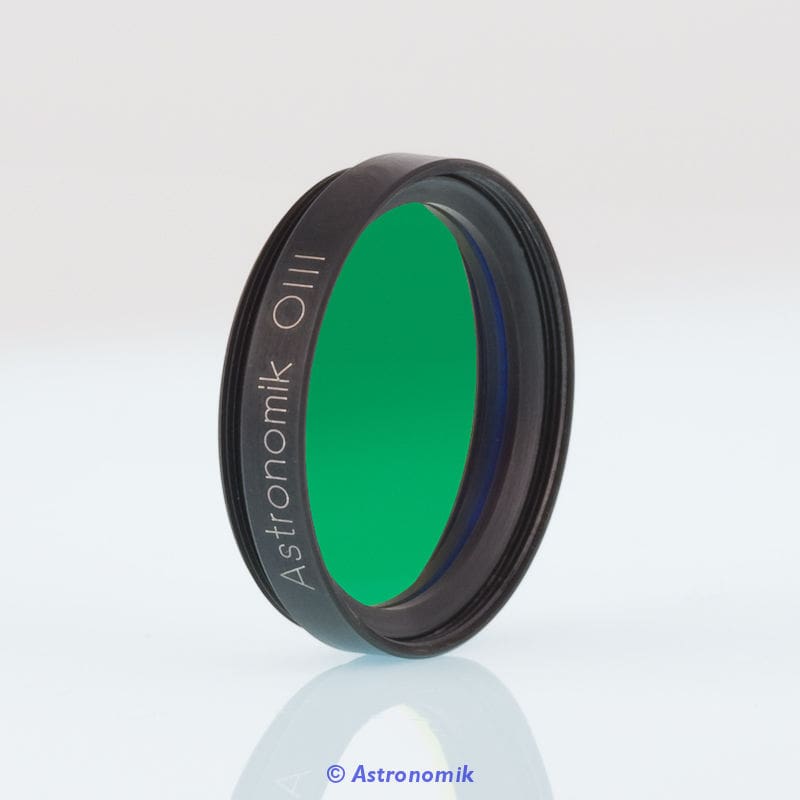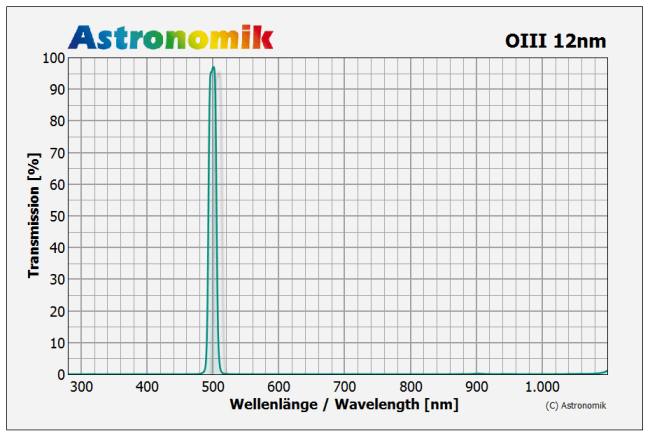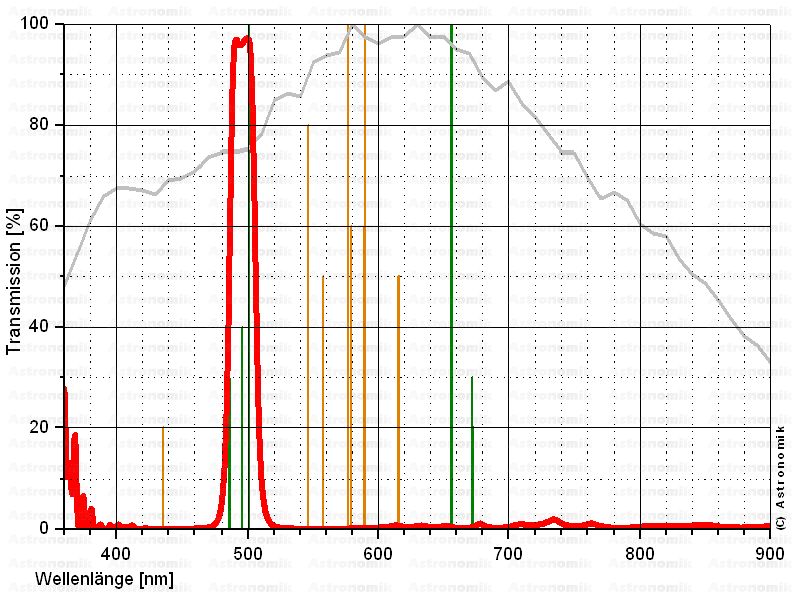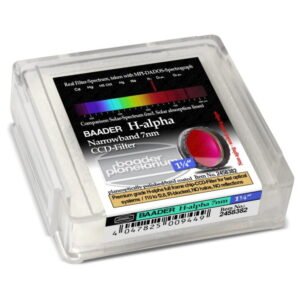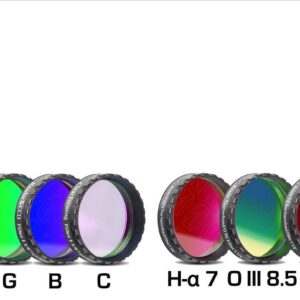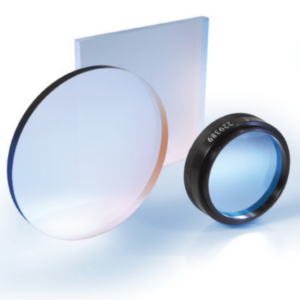The Astronomik OIII CCD filter is a narrow band emission-line-filter for CCD photography. The filter lets the light of double ionized Oxygen of emission nebulae pass and blocks nearly the whole remainder of the spectrum where the CCD is sensitive.
The full width at half maximum (FWHM) of 12 nm is optimal suitable for common CCD cameras and allows the use of very fast optics The optimal aperture ratio for the use of the filter is 1:3 to 1:15 with apertures of more than 6″ (150mm). It should be noted that the filter has a transmission of up to 99%, which cannot be attained by stacking more narrow-band filters. A further note, which led to selecting the half-width (FWHM), is the dark current of common CCD imagers. Exposures with a CCD cooled to -15°C are limited by the dark current of the CCD, even in large cities with a bright background.
Another advantage of the 12 nm filter is the better availability of guiding stars for cameras with a built-in-autoguider (SBIG). If you use a very strong filter like Astronomik H-alpha 6nm filter you often won’t find a usable guidestar.
Together with the other three Astronomik emission-line filters, you can do great color images even from very light polluted places!
Main use
The Astronomik OIII CCD increases the contrast between objects, in this case between the OIII emission line and the skyglow background. Astronomik OIII CCD completely suppresses the emission lines of artificial lighting (mercury (Hg) and sodium (Na)) and skyglow. Transmission losses and chromatic distortions, which arise with other filters, only occur with Astronomik filters when extremely bright aperture ratios of 1:2 and more come into play. The filter has a built-in IR-blocker up to 1150nm. You don’t need an additional IR-blocker with this filter.
Other uses
-
-
- When using the Astronomik OIII CCD filter together with the H-alpha-CCD, OIII CCD, and the SII-CCD filters you can obtain three-color images of emission line objects (gas nebulae) from locations with very strong light pollution. To do so, you would take an image in three different wavelengths, select each one as a color-channel in Photoshop and paste them together as one single color image.
- If you plan to create color images from emission line data, Astronomik CLS-CCD filter is a great choice for the Luminance channel
- The OIII CCD is also great for visual observation. If you plan to get filters for visual observation and for astrophotography get the CCD filter: You may use this filter visual as well as in front of your camera. The built-in IR-blocker doesn’t disturb visual observation but you need an additional IR-blocker if you want to use the visual filter with your camera.
-
This filter is also ideal for visual observation. The IR blocker incorporated in the filter does not affect its use in visuals.
Technical Data
- typ. 95% transmission at 496nm (OIII)
- typ. 95% transmission at 501nm (OIII)
- full width at half maximum 12nm
- transmission from 494nm to 506nm
- Parfocal with other Astronomik filters
- Glass thickness: 1mm
- Completely resistant against high humidity, scratches, and aging effects
- Diffraction limited, the filter will not reduce the optical performance of your telescope!
- Astronomik filters are delivered in a high-quality, long-lasting, filter box
- Since 2008 we do ship filters with a completely new design. Any kind of halo or strange reflection is a matter of past
Available in other sizes and formats. If you do not find the size you want, contact us at info@lunatico.es.

